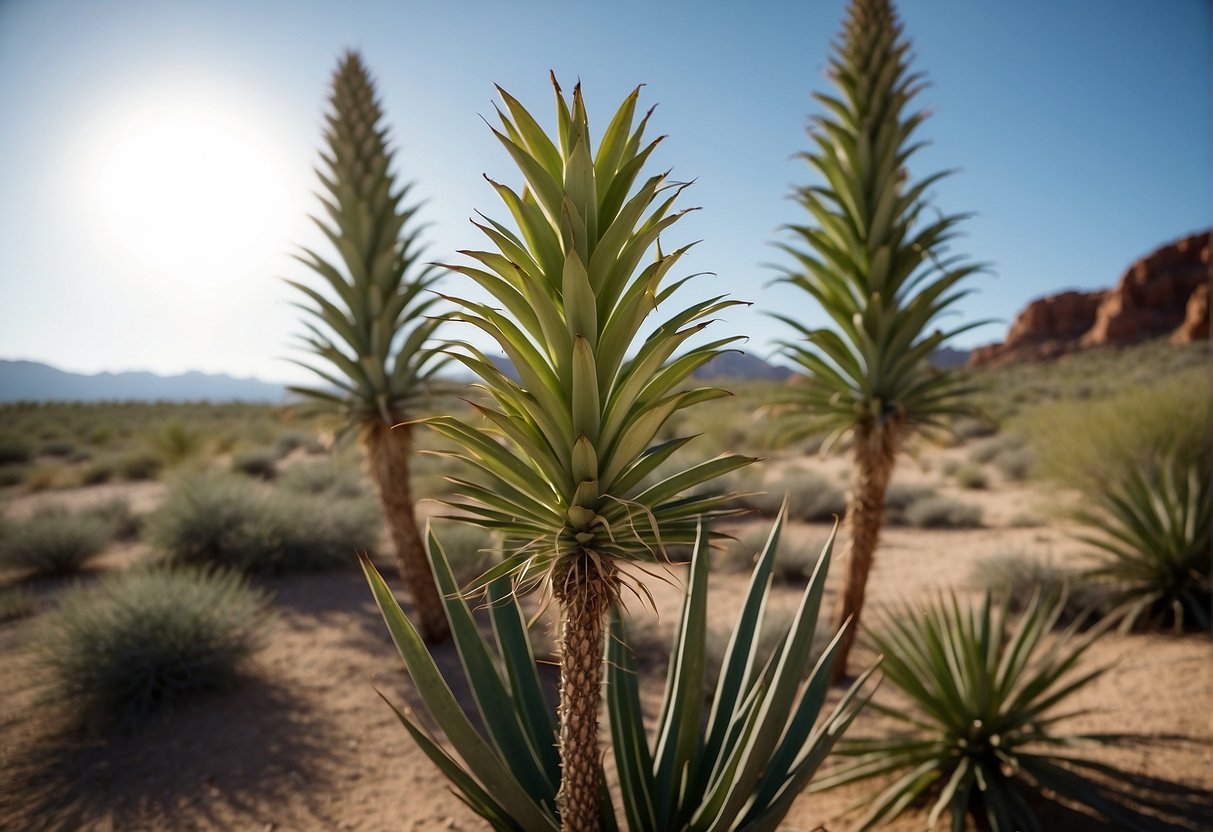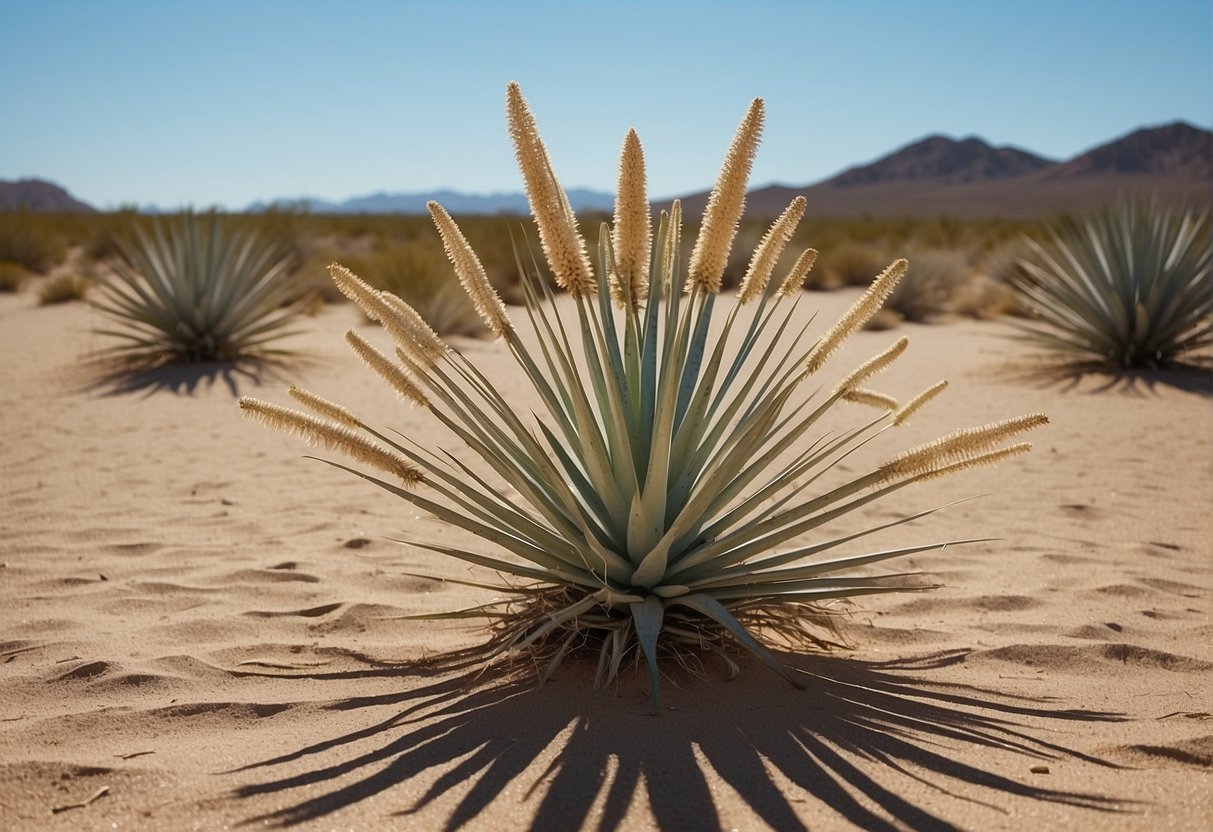Have you ever laid eyes on a yucca plant and pondered its origins? Yucca plants, with their evergreen nature, have gained popularity as indoor plants in the past few years. Characterized by their distinctive look featuring elongated, sharp leaves and lofty, spike-laden floral stems, these plants have a unique appeal. In this piece, we’re going to delve into the roots and spread of yucca plants, examine their botanical traits, and address some common queries about these intriguing plants.

Yucca plants are native to arid regions of North and Central America, from the southwestern United States down to Mexico and Central America. There are around 40 species of yucca plants, each with its own unique features and adaptations to survive in harsh desert environments. Some species are pollinated by yucca moths, which are the only insects that can pollinate these plants. Yucca plants have been used by indigenous peoples for centuries for food, medicine, and fiber, and continue to be an important part of many cultures today.
Key Takeaways
- Yucca plants are evergreen and have become popular as houseplants.
- Yucca plants are native to arid regions of North and Central America and have unique adaptations to survive in harsh desert environments.
- Yucca plants have been used by indigenous peoples for centuries for food, medicine, and fiber.
Origins and Distribution

Yucca plants are native to arid regions of North and Central America, particularly Mexico and the southwestern United States. These plants have a long history of use by indigenous peoples for food, medicine, and fiber. Today, they are widely cultivated as ornamental plants in many parts of the world.
Native Habitats
Yucca plants are adapted to a variety of habitats, including deserts, grasslands, and rocky slopes. In Mexico, they are found primarily in the central and northern regions, while in the United States, they are most common in the Southeast, Mojave, and Joshua Tree regions. The Soaptree Yucca, for example, is found in the Chihuahuan Desert of northern Mexico and the southwestern United States.
Global Spread
Yucca plants have been introduced to many parts of the world, primarily as ornamental plants. They are now found in Europe, Asia, and Australia, among other places. In some cases, they have become invasive species, particularly in areas with similar climates to their native habitats.
Overall, the distribution of Yucca plants is influenced by a range of factors, including climate, soil type, and human activity. Despite their wide distribution, these plants remain an important part of the ecosystems in which they occur, providing food and habitat for a variety of animals and insects.
Botanical Characteristics

Physical Description
Yucca plants are a group of perennial shrubs and trees that belong to the family Asparagaceae. These plants are known for their sword-shaped leaves and tall flower spikes. Yucca plants come in a variety of colors including green, white, blue, and yellow.
The foliage of yucca plants is arranged in rosettes, and the leaves are usually stiff and pointed. The leaves can be up to several feet long, depending on the species. The texture of the leaves can range from smooth to rough, and some species have a waxy coating on the leaves.
Yucca plants can vary in size from small shrubs to large trees. The shape of the plants can also vary, with some species growing in a single trunk and others growing in clumps.
Species Diversity
There are many different species of yucca plants, each with its own unique characteristics. Some common species of yucca plants include Yucca filamentosa, Yucca aloifolia, Yucca flaccida, Yucca elephantipes, Yucca gloriosa, and Yucca gigantea.
Yucca filamentosa, also known as Adam’s needle, is a small shrub that is native to the southeastern United States. This species has green foliage and produces tall flower spikes.
Yucca aloifolia, also known as Spanish bayonet, is a larger species that can grow up to 20 feet tall. This species has blue-green foliage and produces white flowers.
Yucca flaccida, also known as weak-leaf yucca, is a small species that is native to the southern United States. This species has yellow-green foliage and produces white flowers.
Yucca elephantipes, also known as spineless yucca, is a large species that can grow up to 30 feet tall. This species has blue-green foliage and produces white flowers.
Yucca gloriosa, also known as Spanish dagger, is a medium-sized species that can grow up to 10 feet tall. This species has blue-green foliage and produces white flowers.
Yucca gigantea, also known as giant yucca, is a tree-sized species that can grow up to 50 feet tall. This species has blue-green foliage and produces white flowers.
Overall, yucca plants are known for their unique and striking appearance, making them a popular choice for landscaping and gardening.
Frequently Asked Questions
What regions are considered the native habitat of yucca plants?
Yucca plants are native to the arid regions of North and Central America. They are found in areas ranging from the southwestern United States to Mexico and Central America.
In which climates do yucca plants thrive naturally?
Yucca plants are well adapted to hot and dry climates. They can tolerate extreme temperatures and low humidity levels. They are commonly found in desert regions, but can also grow in grasslands, woodlands, and coastal areas.
What are the distinguishing characteristics of yucca plants?
Yucca plants are known for their rosette-shaped leaves, which are often stiff and spiky. They also produce tall, showy flower stalks that can reach up to 30 feet in height. Yucca plants are also known for their tough, fibrous roots, which help them to survive in harsh environments.
How diverse are the species within the yucca genus?
There are over 40 species of yucca plants, each with its own unique set of characteristics. Some species are small and compact, while others can grow to be quite large. Some species produce edible fruits, while others are strictly ornamental.
Can yucca plants be grown both indoors and outdoors?
Yucca plants can be grown both indoors and outdoors, depending on the species and the climate. Some species are better suited for indoor cultivation, while others thrive in outdoor environments. Yucca plants are often used as ornamental plants in gardens and landscapes.
What is the typical lifespan of a yucca plant in its natural environment?
The lifespan of a yucca plant can vary depending on the species and the environmental conditions. Some species can live for several decades, while others have a shorter lifespan. In general, yucca plants are known for their resilience and ability to survive in harsh environments.














